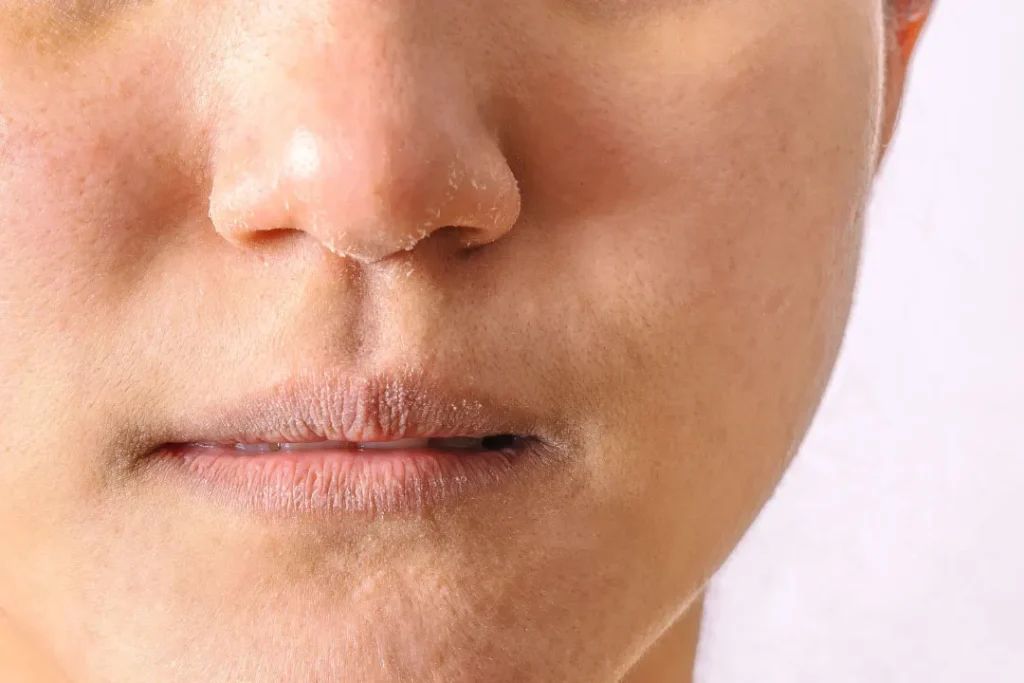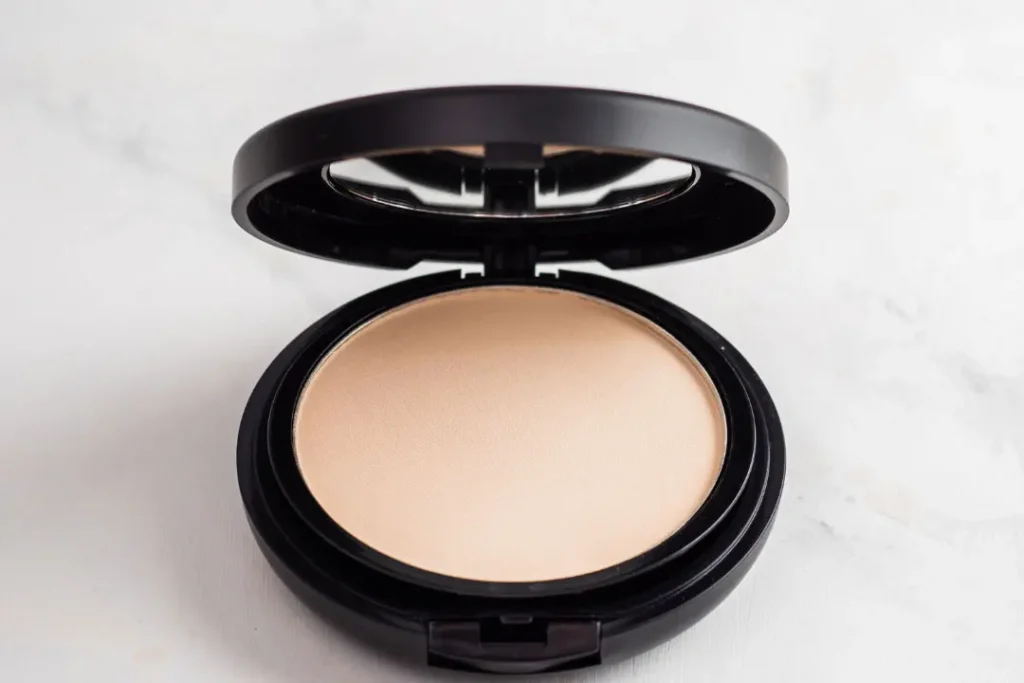5 Great Reasons to Find the Best Powder for Mature Skin if You’re Over 40:
A finishing powder can conceal imperfections, absorb excess oil, and leave your skin looking smooth. There are numerous powders on the market today, but few are formulated for mature skin. We’ll give you five great reasons to look for a powder tailored to your skin’s needs if you’re over forty.
You May Also Like:
6 Ways to Make Your Dull Hair Shine
The Ultimate Guide to Skin Care: Expert Tips and Tricks for Every Skin Type
They’ve heard you! Savvy beauty companies are creating more products for mature skin
In 2018, the American Association of Retired Persons (AARP) launched the Mirror/Mirror survey series, which asked women of all ages to share what wellness, beauty, and self-care mean to them as they age. Not surprisingly, the study identified a gap between how women experience aging and how the media and marketing portray it. Furthermore, the study revealed that many women over 40 felt that the marketplace failed to meet their needs for products and services.
According to the 2019 Mirror/Mirror survey, “Forty percent of Gen-X women (ages 39-54) and 53 percent of Boomer women (ages 55-73) disagreed with the statement ‘the beauty and personal grooming product industry creates products with people my age in mind.’ Seventy percent of women age 40 and older want to see more perimenopausal and menopausal beauty and personal grooming products.”
The beauty industry has long been a multibillion-dollar business, and it continues to grow because it generally strives to meet the demands of consumers. Before the Mirror/Mirror study came out, some cosmetic companies had already noticed that they were failing to meet the needs of a more mature demographic. As a result, there has been a growing trend toward products tailored to women over 40, who now represent a significant portion of the consumer market.

Over forty skin is not twenty-something skin
With age, the skin undergoes several changes, such as decreased collagen production, increased dryness, and the appearance of fine lines and wrinkles. Hormone loss experienced during pre-menopause and post-menopause can contribute to these changes. Environmental factors such as climate can also cause a once-glowing complexion to lose its radiance. However, a consistent skincare routine and makeup suited to your age and skin type may be an effective solution.
A makeup regime designed for women over 40 can take a few years off of your appearance, but the goal is not to make you look like you’re in your 20s; rather, it’s about helping you look and feel your best at your current age. Beauty companies are now formulating products that cater to the needs of mature skin, including face powders. The best powder for mature skin should contain ingredients that improve skin texture, hydration, and elasticity, helping to restore a youthful glow.

5 reasons why a finishing powder may be the best powder for mature skin
If you notice your skin becoming dry, you might think that using a powder will worsen the situation – but that isn’t necessarily the case. The amount of oil in your skin varies from woman to woman, so it’s a matter of selecting a suitable powder for your skin type. If you have oily or combination skin, a matte finishing powder can help reduce shine. If you have dry skin, a luminous powder may provide a soft glow or a natural shimmer.
As the name suggests, finishing powder is the last product applied after your foundation. Makeup artists typically use finishing powder as the final step in a makeup routine to blend everything together; it adds an airbrushed look and is an excellent “finishing touch.” Here are five great reasons to add a finishing powder to your makeup routine.
- Blurs imperfections: A finishing powder designed for mature skin may help minimize the appearance of pores, fine lines, and wrinkles by filling in and blurring the imperfections your makeup may not cover. Look for a powder that contains light-reflecting particles, such as mica, which can create a soft-focus effect that diminishes the appearance of lines and wrinkles.
- Provides hydration: Aging skin tends to become drier, which can make the appearance of lines and wrinkles more noticeable. The best powder for mature skin ideally includes hydrating ingredients such as hyaluronic acid, ceramides, or Dolomite, which can help improve your skin’s moisture retention.
- Controls shine: Although mature skin may produce less oil than younger skin, it can still experience shine. A finishing powder designed for mature skin can help control shine without causing additional dryness, keeping your complexion looking matte and smooth throughout the day.
- Offers additional skin protection: The best powder for mature skin typically contains amino acids that help protect the skin from free radical damage and maintain its hydration and resilience. Additionally, some powders may include an SPF to further protect your skin from the harmful effects of UV radiation.
- Helps make skin look and feel softer: Ethylhexylglycerin is a synthetic skin-softening agent often added to finishing powders for its skin-conditioning effects. It also has humectant properties, which means it helps draw moisture to the top layers of your skin.
Bonus benefit: Many finishing powders can be worn alone instead of your regular foundation on days when you want a lighter look. They’re especially ideal for warmer days as they absorb moisture and minimize shine caused by perspiration.

Where you can find the best powder for mature skin
As mentioned, the beauty industry has recognized the need to provide products for women over 40. One such company is Fièra Cosmetics, founded in 2020, which formulates its products in the U.S. and has employees across four countries. Creative Director Christy Wentzell Johnson says:
“Our carefully crafted line of anti-aging skincare and makeup not only delays visible signs of aging but is scientifically formulated to correct the appearance of existing signs of aging on 40+ skin. Mature women deserve to be served and SEEN in the beauty industry. This belief, along with the constant collaboration with our beautiful customers, is what continues to fuel our passion and our growth.”
Fièra HD Matte Finishing Powder is specifically formulated with natural active ingredients that are particularly beneficial for mature skin, including:
- Lauroyl Lysine: an amino acid that softens and protects the skin.
- Oryza Sativa Starch: a high-polymeric carbohydrate material that helps reduce the visible signs of aging while absorbing excess oil for smoother, younger-looking skin.
- Dolomite: a mineral that enhances moisture retention by drawing moisture from the air and fixing it into the deeper layers of the skin.
Fièra products can be purchased directly from their website.

The best powder for mature skin is worth searching for
If you’re over 40, it is well worth searching for the best powder for mature skin. A finishing powder designed for mature skin can be a valuable addition to your beauty routine. It can help minimize the appearance of fine lines and wrinkles, provide hydration, control shine, and protect your skin, keeping your makeup fresh for a long-lasting look. When shopping, do your research and choose powders that are suitable for your skin type and contain beneficial ingredients for the unique needs of mature skin. Lastly, keep in mind that adopting healthy skin care practices, such as avoiding excessive sun exposure, eating healthy foods, not smoking, and getting enough sleep, can also provide anti-aging benefits for your skin.

For further reading:
Research Guides at Library of Congress – History of the Beauty Business – Business of Beauty: A Resource Guide
POPSUGAR Beauty – Finishing Powder vs. Setting Powder
AARP – Women Seek More Authentic Representation of Aging in Media
AARP – Boomer and Gen-X Women Feel Ignored by Beauty and Grooming Product Makers
American Academy of Dermatology – Skin care in your 40s and 50s
Important Note: The information contained in this article is for general informational purposes only, and should not be construed as health or medical advice, nor is it intended to diagnose, prevent, treat, or cure any disease or health condition. Before embarking on any diet, fitness regimen, or program of nutritional supplementation, it is advisable to consult your healthcare professional in order to determine its safety and probable efficacy in terms of your individual state of health.
Regarding Nutritional Supplements Or Other Non-Prescription Health Products: If any nutritional supplements or other non-prescription health products are mentioned in the foregoing article, any claims or statements made about them have not been evaluated by the U.S. Food and Drug Administration, and such nutritional supplements or other health products are not intended to diagnose, treat, cure, or prevent any disease.